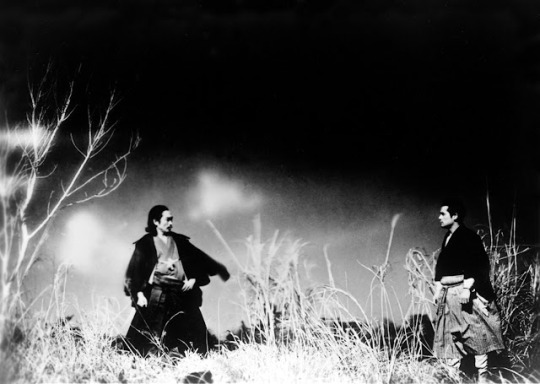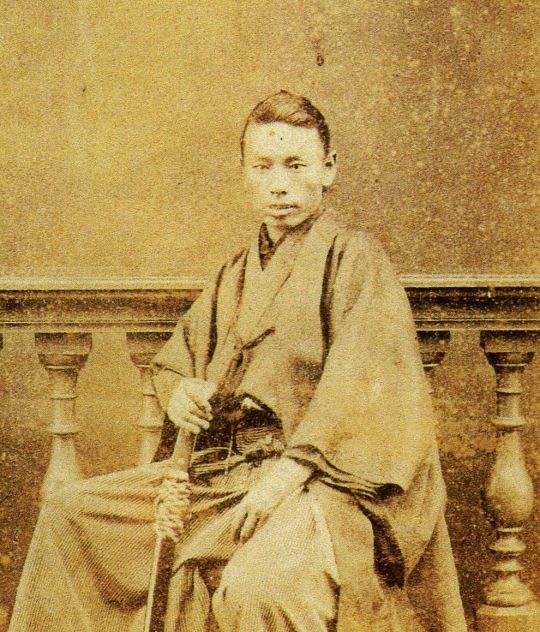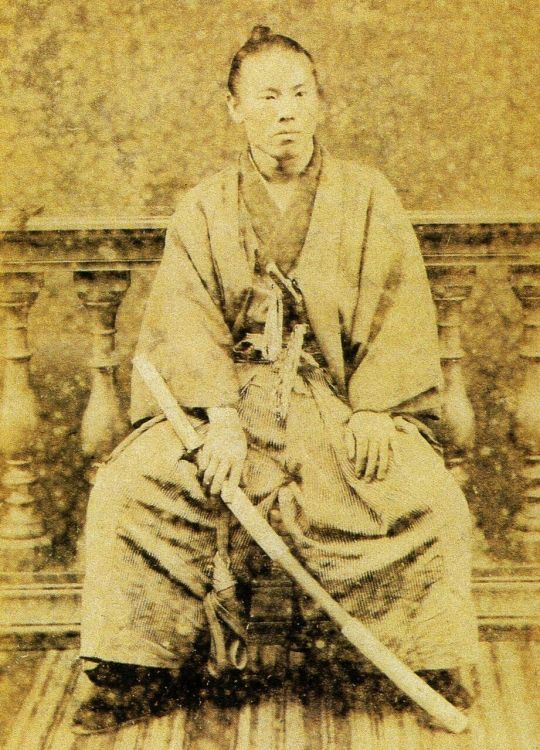#Ryunosuke Tsukigata
Text

The first Mito Kōmon film from Toei, 1957's Lord Mito (aka Lord Mito 1).
Starring Ryunosuke Tsukigata as the retired vice shōgun who wanders the countryside righting wrongs, with Kinnosuke Nakamura and Chiyonosuke Azura as his faithful bodyguards/attendants Suke and Kaku. Mito Kōmon is a fictionalized version of Tokugawa Mitsukuni, an historical figure who was the shōgun's uncle.
I know there were at least three films in the Toei series. Other studios produced their own Mito Komon films, including one from Daiei that co-starred Shintaro (Zatoichi) Katsu and Raizo (Sleepy Eyes of Death) Ichikawa as Suke and Kaku.
The character was so popular that it spawned a Japanese television series that ran continuously from 1969 to 2011, for a total of 1,227 episodes.
#Lord Mito#Lord Mito 1#Mito Kōmon#Tokugawa Mitsukuni#Ryunosuke Tsukigata#Suke#Kaku#Kinnosuke Nakamura#Chiyonosuke Azuma#samurai#jigaigeki
4 notes
·
View notes
Photo

Ryunosuke Tsukigata and Susumu Fujita in Sanshiro Sugata (Akira Kurosawa, 1943)
Cast: Susumu Fujita, Denjiro Okochi, Yukiko Todoroki, Ryunosuke Tsukigata, Takashi Shimura, Ranko Hanai, Sugisaki Aoyama, Ichiro Sugai, Yoshio Kusugi, Kokuten Kodo. Screenplay: Akira Kurosawa, based on a novel by Tsuneo Tomita. Cinematography: Akira Mimura. Art direction: Masao Tozuka. Film editing: Toshio Goto, Akira Kurosawa. Music: Seiichi Suzuki.
You know the plot: A talented, cocky young newcomer takes on the old pros and gets his ass kicked, but he learns self-discipline and becomes a winner. You've seen it played out with young doctors, lawyers, musicians -- it's even the plot of Wagner's Die Meistersinger -- and others challenging the established traditions. But mostly it's the plot for what seems to be about half of the sports movies ever made, including Akira Kurosawa's first feature, Sanshiro Sugata. It's also a film about the conflict between rival martial arts disciplines, jujitsu and judo, but fortunately you don't need to know much about the nature of the conflict to follow the film. From what I gather from reading the Wikipedia entry on judo, the founder of that discipline, Jigoro Kano, wanted to give jujitsu a philosophical underpinning that would put an emphasis on self-improvement for the betterment of society, and he called it judo because "do," like the Chinese "tao," means road or path. Kano's renaming was meant to shift the emphasis from physical skill to spiritual purpose. In Kurosawa's film, young Sanshiro (Susumu Fujita) comes to town wanting to find someone to teach him jujitsu, and signs up with a teacher who accepts a challenge from the judo master Shogoro Yano (Denjiro Okochi) -- the name is an obvious twist on "Jigoro Kano." Sanshiro watches as not only the teacher but all of the other members of his dojo are defeated -- in fact, tossed into the river -- by Yano. Whereupon Sanshiro becomes a follower of Yano's, but has to undergo some defeats and a cold night spent in a muddy pond before he gets the idea of what judo is all about. The film was not a big hit with the wartime Japanese censors, who wanted more aggression and less philosophy in their movies, so 17 minutes were cut from it, never to be seen again. In the currently available print, the missing material is summarized on title cards, but what's left is more than enough to show that Kurosawa arrived on the scene as a full-blown master director. His camera direction is superb, and he knows how to tell a story visually. For example, when Sanshiro joins up with Yano, he kicks off his geta, his wooden clogs, so he can pull Yano's rickshaw more efficiently. Kurosawa cuts to a passage-of-time montage in which we see one of the abandoned geta lying in the road, then in a mud puddle, covered with snow, then tossed aside as spring comes. The film's crucial scene is a showdown between Sanshiro and his jujitsu rival, Higaki (Ryunosuke Tsukigata), in a field of tall grasses, swept by wind with rushing clouds overhead; it's a spectacular effect, even if the battle turns out to be a bit anticlimactic. However much the censors may have disliked it, audiences were enthusiastic enough that Kurosawa was persuaded to make a sequel.
Sanshiro Sugata, Part Two (Akira Kurosawa, 1945)
Cast: Susumu Fujita, Denjiro Okochi, Ryunosuke Tsukigata, Akitake Kono, Yukiko Todoroki, Soji Kiyokawa, Masayuki Mori, Kokuten Kodo, Osman Yusuf, Roy James. Screenplay: Akira Kurosawa, based on a novel by Tsuneo Tomita. Cinematography: Takeo Ito. Production design: Kazuo Kubo. Film editing: Akira Kurosawa. Music: Seiichi Suzuki.
Patched together from what aging film stock could be gathered during the end-of-war shortages in Japan, and interrupted during its filming by bombing raids, Sanshiro Sugata, Part Two was a labor imposed on the writer-director by the studio, Toho, and Kurosawa's lack of enthusiasm for the project shows. The story is routine: Sanshiro has helped judo triumph over jujitsu as the primary Japanese martial art, but he has gone into retreat for several years, honing his spirituality. But one day he comes across an American sailor (Osman Yusuf) beating up a rickshaw driver -- a job he once took on himself -- and thrashes the bully. This brings him to the attention of a promoter who wants to stage a fight between the judo master and an American boxer named William Lister (Roy James). Eventually, after another fighter is beaten to a pulp by Lister, Sanshiro gives in and thrashes Lister, giving the prize money to the fighter who had been beaten. Meanwhile, his old opponent, Gennosuke Higaki (Ryunosuke Tsukigata), whom he defeated at the end of the first film, warns him that his brothers, Tesshin (also Tsukigata) and Genzaburo Higaki (Akitake Kono), are out to revenge themselves for Gennosuke's defeat. They are masters of karate, which originated on Okinawa and was just making its way into mainland Japan at the time when the film is set, the late 19th century. Gennosuke gives Sanshiro a scroll depicting the basics of karate to help him in the eventual fight with the brothers. Naturally, the film concludes with a fight between Sanshiro and Tesshin -- the other brother is recovering from an epileptic seizure -- that takes place in the snow, an echo of the fight in the original film with Gennosuke in a windswept field of tall grasses. This battle is the only part of the film that shows much commitment on the part of Kurosawa, who insisted that the principals fight barefoot in the snow, not without many complaints from the actors. Unfortunately, the poor film stock, unable to provide shades of gray, turns much of this fight into a battle of silhouetted figures. Much has been made of the propaganda in the film, particularly the portrayal of the hapless American sailor and boxer, but Kurosawa, no lover of the imperial regime, manages to shift the film's emphasis to the fearsomely wild Higaki brothers.
3 notes
·
View notes
Text
Now watching:

1 note
·
View note
Photo

Sanshiro Sugata - Akira Kurosawa 1943
#Sanshiro Sugata#Akira Kurosawa#Denjiro Okochi#Susumu Fujita#Yukiko Todoroki#Ryunosuke Tsukigata#Takashi Shimura#Ranko Hanai#Poster
38 notes
·
View notes
Photo


Ryunosuke Tsukigata (月形龍之介 1902ー1970 )
He played Okita in the movie “Swordsman Okita Souji” (1929)
5 notes
·
View notes
Text
Okita’s topknot
Speaking of Okita Souji, that characteristic chonmage (samurai topknot) hangs behind his sakayaki (shaved head) without putting the chonmage on top.
In general, it is no exaggeration to say that chonmage = Okita Souji, but what was it like in reality?
This is considered a portrait of Okita Souji.

(Source: Bakumatsu Guide)
I don't even know his face, but a portrait? You might think it is, but of course it’s not him in person.
This was created with the face of Okita Souji's older sister’s grandson, Okita Kaname, because she said that his face was "somehow similar to Souji".
(By the way, his sister Mitsu saw this portrait and said "it doesn't look like him”...)
Regardless of his appearance, there’s a chonmage.
It’s an example of a chonmage.
This chonmage was the hairstyle of Tsukigata Ryunosuke who played in the movie "Swordfighter Okita Souji" (剣士沖田総司) released in 1945 .
Probably the first movie with Okita Souji as the main character.
The above portrait seems to have synthesized Kaname's face with this hairstyle.
So why did "Swordfighter Okita Souji" use this chonmage?
I couldn't find any material that mentions that point, but I remember seeing an article in the past saying, "That was the hairstyle that was popular among the shishi at the end of the Edo period. It was like a warrior’s style, so they used it."
Certainly, this was also the chonmage of a young shishi played by Ichikawa Raizo in "Tsukigata Hanpeita - Hana no Maki / Arashi no Maki" (月形半平太 花の巻・嵐の巻) in 1947 .
There may have been some visual freshness, but Okita Souji opposed the shishi.
Having the same chonmage is a little strange.
At that time, in the testimony of 御隠居 [T/N: daughter of a Kyoto kimono shop owner?] who loved Okita Souji:
"He always tied his hair properly with purple motoyui (paper cord), and... his hair was in a ronin’s topknot, which was fashionable at the time."
I don't know what the ronin style is, so when I look at the ronin at that time:

Sakamoto Ryoma and the Kaientai (Source: なんでもまとめサイト海援隊まとめ)

Kiyokawa Hachiro (Source: Bakumatsu Guide)

Inoue Mita (Kaoru) (Source: 幕末写真の時代)

Ito Shunsuke (Hirofumi) (Source: 幕末写真の時代)
Many of them have a full head of hair (a chonmage without shaving the forehead).
(By the way, I looked at some old photographs, but I couldn't find anyone who had a "warrior-style" chonmage. Was it really popular? It's a mystery.)
And from these two people who are very close to Okita Souji:

Kondo Isami (Source: 幕末写真の時代)

Hijikata Toshizo (Source: 幕末写真の時代)
Kondo Isami also has a full head of hair.
There is no photo of Hijikata Toshizo before the hair cut, but in the first year of the Meiji era, with this amount of hair, he probably had a full head of hair before.
I don't have any materials, but I think that Kondo Isami's adoptive father, Kondo Shusuke, also had full hair.
Kondo Shusuke was not a samurai, and he was a master at catching a snake and eating it raw.
I don't think he cared too much about his appearance.
Shusuke is a great teacher who taught Okita Souji from an early age.
Considering that his respected young mentor Kondo Isami and his peer Hijikata Toshizo also had a full head of hair and hated furu (a relaxing bath), it seems that Okita Souji may have had a full head of hair from an early age.
And, as for his motoyui..., this post has become too long, so I will continue next time.
References
秘蔵古写真 幕末 日本カメラ博物館 監修 山川出版社 2019-04-21
幕末 : 写真の時代 第2版 小沢健志 編, 渡辺義雄, 小西四郎 監修 筑摩書房
Bakumatsu Guide https://bakumatsu.org/
幕末奇談 (中公文庫) 子母澤寛 中公文庫 寛中央公論新社 2014-01-23
沖田総司・おもかげ抄 森満喜子 新人物往来社 満喜子 1999-04
沖田総司伝私記(2007年刊行) 菊池明 新人物往来社 明中経出版 2007-03-23
なんでもまとめサイト 海援隊隊士まとめ https://we.eek.jp/matome/
Wikipedia
11 notes
·
View notes
Photo

Lord Mito 1957 This most celebrated all-star movie version of the popular series features Tsukigata Ryunosuke as Mito Komon, the sage who wanders the countryside rectifying government corruption along with his faithful attendants Suke and Kaku.
0 notes
Photo

19 notes
·
View notes
Photo









Okita Kaname: Mitsu’s grandson who looked like Souji
Kaname was Okita’s sister Mitsu’s grandson (Yoshijiro's second son). He was the model for the portrait of Okita Souji often considered as his appearance, but it was drawn long after Souji’s death and doesn’t look very realistic.
This painting of "Okita Souji", which was released in June 1929, is a composite of Souji's hairstyle played by Yosuke Tsukigata (*. Ryunosuke Tsukigata) and the face of Kaname. "Okita Souji Omokagesho" (定本沖田総司おもかげ抄) states that Katsuyoshi, the eldest son of Kaname, told the author Makiko Mori, "That was modeled after my father, Kaname Okita.". Anyone can be convinced that this is the case by comparing the photo of Kaname with the portrait of Souji.
It is written in the same book, but I'm sorry Professor Kikuchi, I don't think it's similar at all (laughs). I think that it captured the characteristics, but I think that the person who drew this portrait was not very good at portrait drawing. This is a picture of Mr. Kaname, probably around 40 years old.
Well, when it comes to good-looking guys, it feels like "it depends on the viewer," but at least it's a lot more handsome than this portrait. In terms of image, it is a type like "a high school baseball player that professional teams pay attention to". I felt that it was a good youth type of athlete.
It is often said that Souji Okita had a "flatfish face", but since he cannot have eyes on one side like a flatfish, it actually means a "flat face" or a so-called "fish face" that is far from the eyes. I was wondering, but Kaname is actually a little off the look. Also, when I saw the faces of Mitsu and his great-grandson Tetsuya in the photo, I thought that the Okita family had a big nose, but Kaname doesn't seem to be so. Well, if you say it strongly, it 's like Kiyomiya, Shintaro Fujinami, Shohei Ohtani. He looks strong and kind, and when Mitsu-san said, "He looks like Souji," he was still a boy, but I'm sure he was like Souji even when he was an adult. Actually, I tried to make a collage photo of Soji Okita based on the photo of Kaname Okita.
(https://ameblo.jp/matasichi/entry-12405656894.html)
Souji’s eldest sister Omitsu's grandson, Okita Kaname.
In later years, her grandson, Kaname, became very interested in and devoted himself to a person being named Okita Soji.
■ What shows that devotion ■
① Named his second son "Souji"
② In 1945, when that son was born, Mr. Kaname presided over the movie of Souji in Tachikawa City. Shibasaki-cho that was aired between (perhaps this also comes out vinegar after town) a month in Fusaiji ※
③ "Shinsengumi Chronicles" was published by Kan Shimozawa in the same year. It seems that he also read it (Kaname was interviewed by Shimozawa Kan later)
* Reference: Starring Yosuke Tsukigata (Ryunosuke)
(http://soujii.blog38.fc2.com/blog-entry-6.html)
Image sources:
http://kazehikaruccc.edoblog.net/%EF%BC%9F/%E3%82%A4%E3%82%B1%E3%83%A1%E3%83%B3%E5%A4%A7%E5%A5%BD%E3%81%8D%E2%91%A0
http://soujii.blog38.fc2.com/blog-entry-6.html
https://tagjpgazo.blogspot.com/2021/07/109603.html
https://msp.c.yimg.jp/images/v2/FUTi93tXq405grZVGgDqG5llPH0TKgPrwsro9v_lPLA5XWRXjh6PXWtQs096qqWBZ_9jpidK4_mfXOsv4rWPu0aVyPM2oMOzO7OqapMlEaCu0dm2eUA0t4r_ecsgK8ZMohsPExgZHZGKckmy_CO0QnJ4cYHHofxQyy3LeIPtvd 8=/a5b92453.jpg?errorImage=false
https://www.amazon.co.jp/-/en/gp/product/B00C17S7AU
6 notes
·
View notes